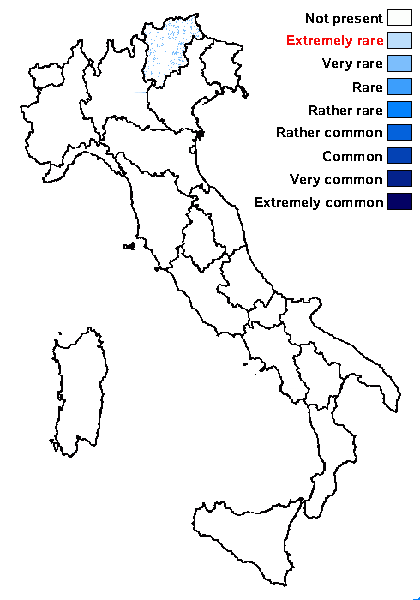Letharia lupina Altermann, S.D. Leav. & Goward
Lichenologist, 48: 434, 2016
Synonyms:
Distribution: N - TAA (Ament-Velásquez & al. 2021).
Note: this species can be separated from L. vulpina, with which it may co-occur, only by molecular data. From the data published by Ament-Velásquez & al. (2021), it seems that, contrary to the situation in W North America, it is much less frequent than L. vulpina in the Alps.
Growth form: Fruticose
Substrata: bark
Photobiont: green algae other than Trentepohlia
Reproductive strategy: mainly asexual, by soredia, or soredia-like structures (e.g. blastidia)
Subcontinental: restricted to areas with a dry-subcontinental climate (e.g. dry Alpine valleys, parts of Mediterranean Italy)
Commonnes-rarity: (info)
Alpine belt: absent
Subalpine belt: very rare
Oromediterranean belt: absent
Montane belt: absent
Submediterranean belt: absent
Padanian area: absent
Humid submediterranean belt: absent
Humid mediterranean belt: absent
Dry mediterranean belt: absent

Predictive model
 Index Fungorum
Index Fungorum
 GBIF
GBIF




